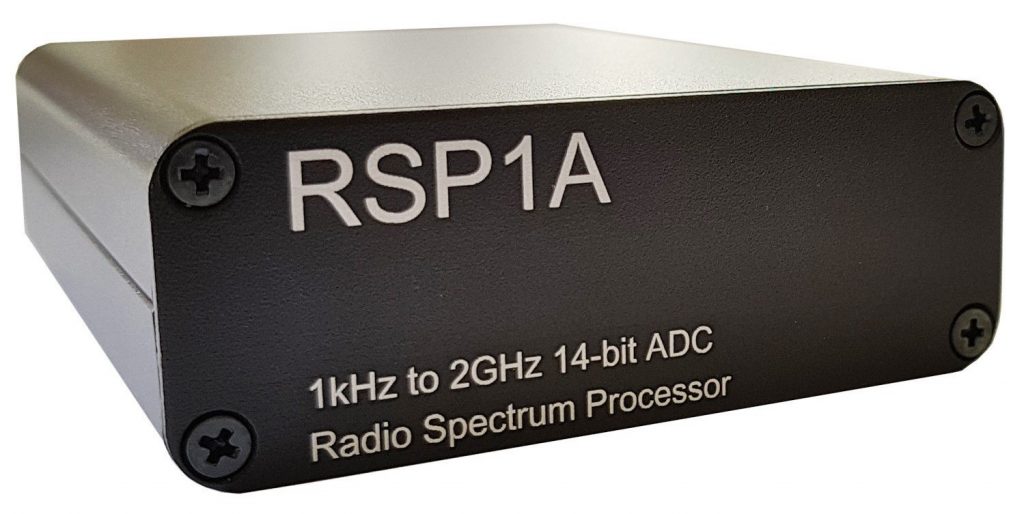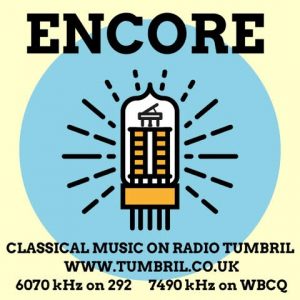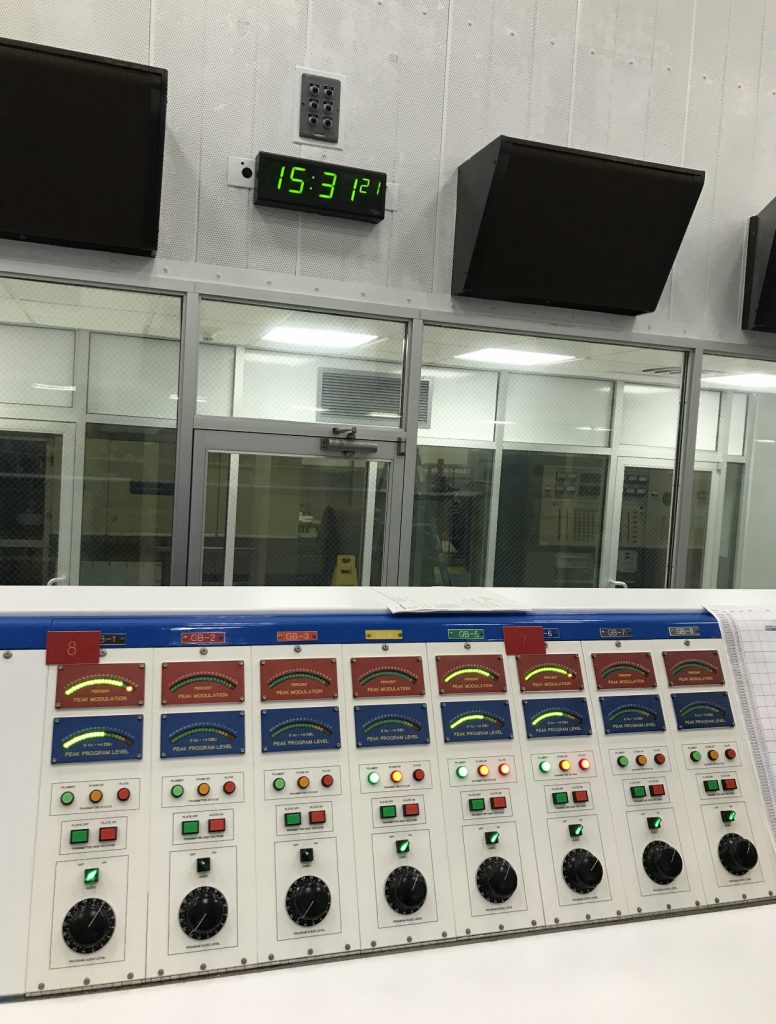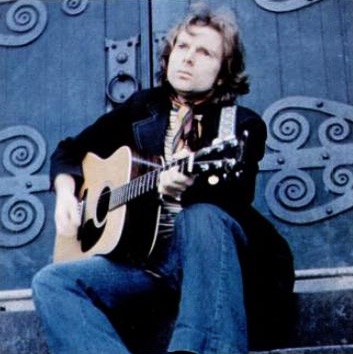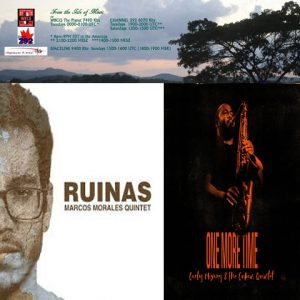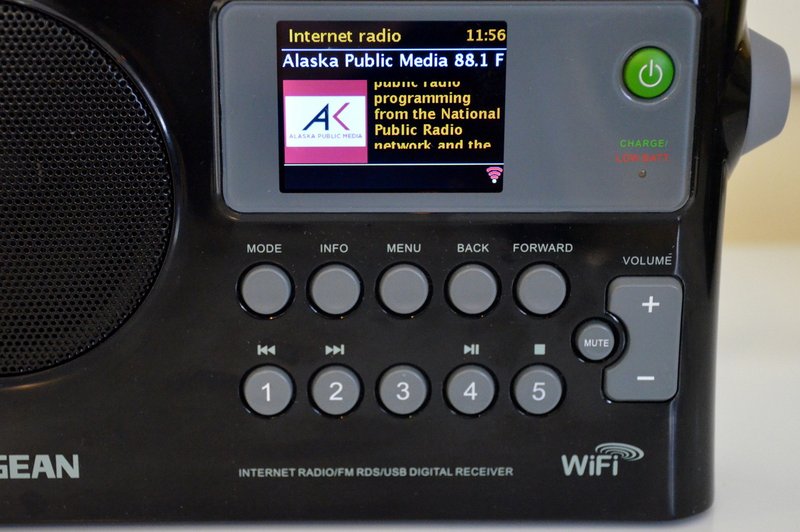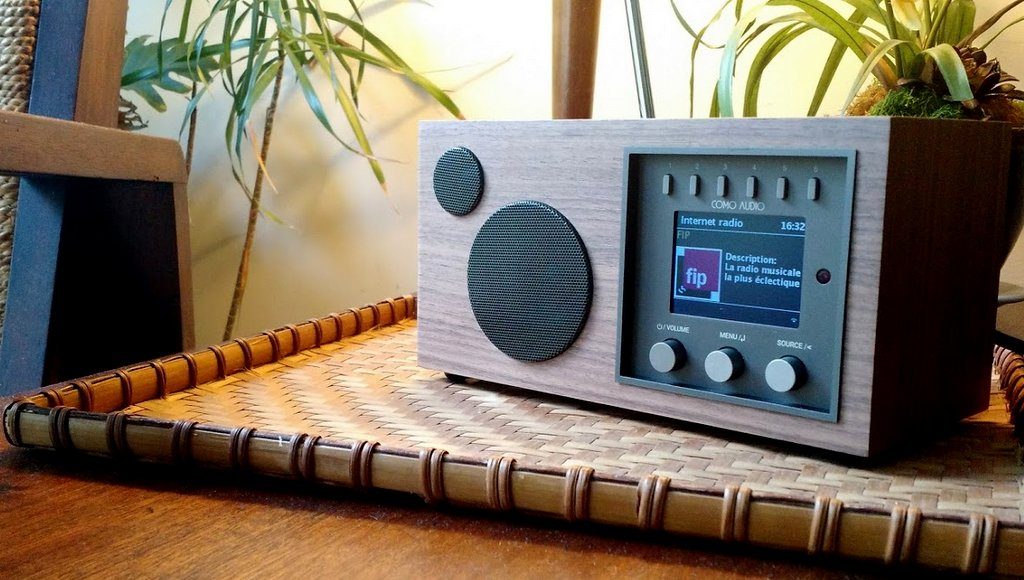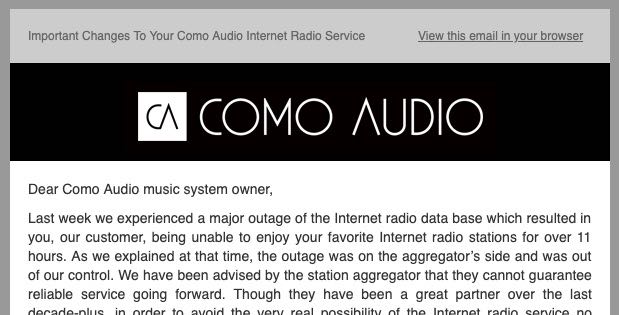A number of SWLing Post readers have asked about the metal case upgrade for the SDRplay RSP1A. It has been out-of-stock for several months. I just learned via Mike Ladd on Facebook, that the case is back in stock and shipping via eBay. He also noted that it will soon be available via Amazon.com. The price is $24.95 shipped via eBay.
Encore – Classical Music on shortwave – broadcast on Sunday afternoon in Europe & USA
Encore – Classical Music this weekend is being broadcast as usual by Channel 292 (Europe) on 6070 kHz at 15:00 UTC Sunday 12th May.
And by WBCQ on 7490 kHz at 00:00 – 01:00 UTC Monday 13th May.
There is a repeat on 6070 kHz on Friday 17th May at 19:00 UTC.
This week’s show starts with the Dance of the Knights from Romeo and Juliet, then we have a saxophone concerto, a piece by Louiis Moreau Gottschalk, an intermezzo from Cavalleria Rusticana, and an extraordinary example of 1930’s film score.There is also some Debussy and Gounod.
In a programme first – every piece played this week has been request by a listener.
There is another first too – I have added a short field recording. It was made on the banks of a burn (what streams are called in Scotland) high up in the hills a couple of weeks ago.
As usual – reception reports and requests for music to play in future programmes will be very welcome.
Regular Broadcast times are:
15:00 – 16:00 UTC Sunday, and repeated 19:00 – 20:00 UTC Friday on 6070 kHz (Channel 292 Germany).
00:00 – 01:00 UTC Monday on 7490 kHz (WBCQ – Maine)
Brice Avery – Encore – Radio Tumbril – www.tumbril.co.uk
Can you guess where I took this photo?
FEBC to blanket North Korea with 250,000 watt AM signal
Many thanks to SWLing Post contributor, Tracy Wood, who notes:
New construction – a 250 kw FEBC medium wave outlet coming southwest of Seoul. BTW, FEBC currently leases at least one hour of VOA-Korean on FEBC 1188 khz Seoul.
An interview with the FEBC president on CBN News:
(Source: CBN NewsCBN News)
Communist North Korea is about to get hit with a massive new radio signal carrying the message of Christ’s love like never before.
“It’s an AM station, 250,000 watts, which will clearly cover North Korea,” said Ed Cannon, president of Far East Broadcasting Company, also known as FEBC.
For over 75 years, FEBC has been using radio signals to send the message of Jesus Christ around the world.
Cannon says this new “super station” will be erected close to the border of North and South Korea.
“We’ve secured a location on the western coast of South Korea just a few miles south of the Demilitarized Zone,” Cannon told CBN News. “It’s a perfect location because the signal goes across the ocean for a few miles and then goes right into North Korea.”
FEBC’s president says the radio signal will launch in a few months and will carry gospel programs produced from neighboring South Korea.
“The strategy of our organization is to use indigenous people in their native language to produce programming,” Cannon said. “We have a large segment of South Korean people broadcasting and we also have a number of escapees, refugees from North Korea, who’ve come to our organization.”
Cannon claims the signal will be “unblockable” by North Korea’s regime and will “reach far past the northern boundary of North Korea covering the entire country with the message of Jesus Christ.”
According to its website, FEBC’s broadcasts can be heard in 107 languages and 49 countries from 149 stations and transmitters.
“Our goal in North Korea is the same as it is in all of our other countries: to share the gospel through radio so that people will be inspired to follow Jesus Christ as their Savior,” Cannon told CBN News in an earlier interview.
North Korea is the most dangerous country in the world for Christians. Cannon says anyone caught listening to FEBC programs faces severe consequences.
“The {North Korean} refugees themselves say ‘pray for courage, pray for perseverance’ because the Christians are reaching out in ways to gather together in the Name of Christ, to pray together, to listen to the radio together, and they are willing to endure severe persecution,” Cannon told CBN News.
Each year, Open Doors USA releases their World Watch List, a ranking of the 50 countries where Christians face the most persecution.
North Korea has taken the top spot for 18 years in a row.
“If Christians are discovered, not only are they deported to labor camps as political criminals or even killed on the spot, their families will share their fate as well,” Open Doors asserted on their website. “Christians do not even have the slightest space in society, on the contrary, they are publicly warned against.”
Click here to read the full article art CBN News.
Thank you for sharing this, Tracy!
Brilliant radio song by Van Morrison: “In The Days Before Rock’n’Roll”
Many thanks to SWLing Post contributor, Dave Porter, who writes:
After some 20 years I have rediscovered this radio song by the UK northern Irish singer Van Morrison.
“In The Days Before Rock’n’Roll”
There are some great TX station names in the song! It’s a full 8 minutes long….
Take a listen…
Click here to view/listen on YouTube.
I don’t think I’ve heard this song in twenty years or more. Thank you for sharing this, Dave!
I’ll have to add Van Morrison to the list of radio influenced musicians we’ve featured in the past, including:
- Peter Gabriel
- Joe Strummer
- John Lennon
- Wilco
- Besnard Lakes
- Elliott Sharp
- Növö
- Holger Czukay
- and, of course, our friend Madtone!
Post Readers: Do you know of any other musicians who were influenced by the shortwaves? Please comment and share links to their work!
FTIOM & UBMP, May 12-June 1
From the Isle of Music, May 12-June 1 (three weeks):
A. May 12-18: Special guest Marcos Morales presents his new Jazz recording “Ruinas”.
B. May 19-25: Cuban dance party with various groups
C. May 26-June 1: Special guest Carlos Miyares presents his new Jazz Recording “One More Time”
The broadcasts take place:
1. For Eastern Europe but audible well beyond the target area in most of the Eastern Hemisphere (including parts of East Asia and Oceania) with 100Kw, Sunday 1500-1600 UTC on SpaceLine, 9400 KHz, from Sofia, Bulgaria (1800-1900 MSK) Station website: www.spaceline.bg
2. For the Americas and parts of Europe, Tuesday 0000-0100 UTC (New UTC) on WBCQ, 7490 KHz from Monticello, ME, USA (Monday 8-9PM EST in the US).
Station website: www.wbcq.com
3 & 4. For Europe and sometimes beyond, Tuesday 1900-2000 UTC and Saturday 1200-1300 UTC on Channel 292, 6070 KHz from Rohrbach, Germany.
Station website: www.channel292.de
Uncle Bill’s Melting Pot, May 12-June 1 (three weeks):
A. May 12 & 14: Episode 111 features a belated tribute to Cinco de Mayo
B. May 19 & 21: Episode 112 features Balinese gamelan
C. May 26 & 28: Episode 113 features modern Flamenco Fusion from Spain
with music by Laura de los Angeles and others
The transmissions take place:
1.Sundays 2200-2230 UTC (6:00PM -6:30PM Eastern US) on WBCQ The Planet 7490 KHz from the US to the Americas and parts of Europe
2. Tuesdays 2000-2030 UTC on Channel 292, 6070 KHz from Rohrbach, Germany for Europe.
Frontier Silicon and vTuner aggregation aggravation continues
Many thanks to a number of SWLing Post readers who’ve contacted me regarding the ongoing issues with WiFi radios that rely on the Frontier Silicon/vTuner aggregator partnership. Two days ago, we mentioned this in a post about the service outage that affected Sangean and Como Audio WiFi radio devices.
Turns out, the outage was a sign of deeper troubles that will affect any Internet radio device using the Frontier Silicon aggregator. I know that at least Sangean and Como Audio use the service, but I image there are many more, especially in some automobiles. Indeed, this might also affect devices which use the vTuner service.
At present, I am unable to use my Como Audio Solo or the Sangean WFR-28 WiFi radio. Both require re-saving all of the presets.
Sangean posted a short message on their devices yesterday. Dennis Dura notes:
I have the Sangean WFR-28 and just came home to find a message on every preset saying “due to recent changes to our internet radio service, you will need to save your presents again”.
Not only that, but many of the menus of the radio have changed.
And most bizarre, in the Genre setting, they have eliminated “Jazz” as a category, and have added many I’ve never before or heard off. How does a company eliminate a category that is understood across the world?
Como Audio actually sent an email message regarding the lapse of service yesterday evening.
The Como Audio message described, in some detail, what had actually taken place. Much of Como’s message was based on the following message Frontier Silicon posted on their website:
Why did the service change on 7th May 2019?
On 1st May 2019 we experienced a major outage of the Internet Radio & Podcast service used by our customers’ Internet Radio devices. This was caused by issues with a third-party service provider that were outside our control. The service provider has also informed us that they are unable to ensure service provision beyond week commencing 6th May. Any such failure to provide the service would have caused the Internet Radio functionality on all our customers’ devices to stop working unless we had taken this remedial action.
As a result, we have made some changes to the way the service is delivered, and you may notice the following changes:
- We have deployed a replacement service, and configured all devices to use it. It may take several hours for your device to see the new service. Older devices may need to be powered off and back on again to force them to see the new service.
- We are using a new provider for the Internet Radio and Podcast directory. You may discover some new stations and podcasts that were not previously available, and you may find some stations and podcasts are missing. If you notice a station or podcast that you think is missing from the database then please raise a support ticket and we will aim to get it added within 2 business days.
- You may see some slight changes to the menu structure on your devices due to the change of provider.
- The previous customer portal is no longer available, and so you can no longer use it to add your own stations. If you would like a station adding to the database then please raise a support ticket and we will aim to get it added within 2 business days.
- It is no longer possible to recall Favourites. Depending on your device, we recommend using the Device Presets or Last Listened functionality to recall your favourite stations instead.
- Any Device Presets that you have previously saved will no longer work and so you will need to resave them.
We apologise for any inconvenience caused as a result of these changes, which we have made in order to provide continuity of service for customers and users. This is a large and complex migration and whilst we have tested and rehearsed this scenario in advance there may be an initial period of reduced service stability. We will be monitoring the service closely during this time and will communicate any issues via the status page at https://status.frontiersmart.com/.
If you have any further comments or questions about the service then please browse the Knowledge Base, and submit a support ticket if you cannot find the information you are looking for.
Of course, we all know that the “third party” is the vTuner aggregator. I’m curious who Frontier Silicon will use now as an aggregator, or if they’ll self-host the database.
A number of readers have reported issues saving their front panel presets and other favorites. My guess is that this functionality will return after the new service is fully implemented. I also assume Frontier Silicon could implement any missing music genres (like the Jazz genre Dennis mentioned). At least, I hope so.
One thing we’ve learned is how very little is actually stored locally in these WiFi radios. It seems everything down to the front panel presets rely on the aggregator functioning properly.
If you have one of the affected WiFi radios, please comment about your experience getting it back online and loaded with station presets. Please report any quirks you encounter during the process. I’ve gotten mixed reports about the Como and Sangean mobile phone applications working properly.
I shall now go about re-saving all of the presets in my family’s WiFi radios.

